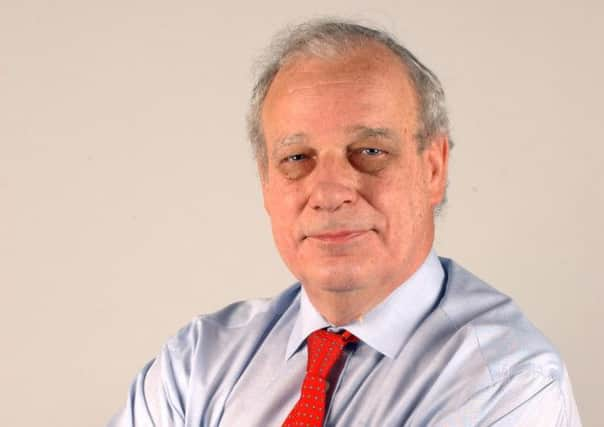Comment: Comfort in the arms of old favourites


Just when it seemed markets were gaining traction and set to break new high ground, there came unnerving reminders of unresolved issues – worries about eurozone banks.
Fears about the financial health of one of Portugal’s biggest banks, Banco Espirito Santo, rekindled worries about systemic risks to peripheral eurozone banks. The bank’s parent has delayed interest payments on some of its short-term debt securities and optimism that the eurozone had got through the worst began to wane.
Advertisement
Hide AdAdvertisement
Hide AdSentiment was further unnerved by equally familiar concerns – weak industrial production figures from Italy and France, reminding us of continental Europe’s failure to mount a convincing recovery.
The FTSE 100 fell 2.6 per cent on the week, while the Eurofirst 300 dropped by just over 3 per cent. Specific fears about Banco Espirito began to ease by the end of the week, but in the views of some, the bull run may not be so readily resumed.
According to JP Morgan Asset Management, markets are set to “freak out” before the year-end as America’s economic resurgence forces a shift from today’s dovish stance – another all-too familiar refrain. Strategist Andrew Goldberg says markets are “way too complacent” about the prospect of US interest rate rises, and will be dealt a reality check when the US Federal Reserve begins to change its tune.
Goldberg argues that the Fed’s stance on monetary policy was “inappropriately dovish” given the US economic recovery, helping markets to surge. He says a correction is due, either in response to warnings from the Fed about rates, or when further strong economic data forces investors to price-in a rise.
Here in the UK, the fall in the FTSE 100 was cushioned by defensive tobacco shares. Imperial group was the biggest riser last Friday, jumping 81p, or three per cent to £27.40, as it announced it was in talks to acquire brands from US tobacco companies Reynolds and Lorillard, which are reportedly set to merge.
British American Tobacco, which has a 42 per cent stake in Reynolds, rose 36p to £35.56 on analyst assessments that the potential merger would be “benign” for the group.
So, with a fractious eurozone and worries about monetary tightening in the US, where are investors turning? None other than yesteryear’s stock market golden guru, Neil Woodford.
His new Woodford Equity Income Fund has taken in £1.6 billion.
Advertisement
Hide AdAdvertisement
Hide AdWhere is Woodford’s money going? Why, into the stock market’s long-time favourite darlings. The fund looks to be closely replicating his former holdings at Invesco Perpetual.
There are many familiar names on the new list, including AstraZeneca and GlaxoSmithKline, both of which were core holdings of the funds now managed by Mark Barnett at Invesco.
In fact, only two of the top ten did not previously appear in the top ten at either Invesco Perpetual Income or Invesco Perpetual High Income: Imperial Innovations and Rolls-Royce.
The Morningstar website also revealed last week that the manager has purchased two stocks that he hasn’t invested in for a substantial length of time: retailer Next and recently-floated breakdown service provider AA – a business Woodford describes as “unbelievably cash generative”.
Otherwise the Woodford list, in addition to the pharma giants, is an all-too familiar recitation of stock market oldies – BAT, BT, Imperial Group, Roche, Reynolds American and Capita.
The new fund will be targeting a four per cent yield with aims to grow the yield to a “high single digit”. It looks a compelling choice for those seeking to take advantage of the higher Isa allowance with a defensive portfolio – and for those with a preference for old tunes in new times.